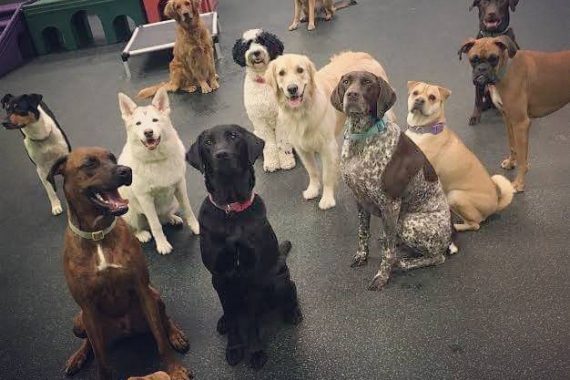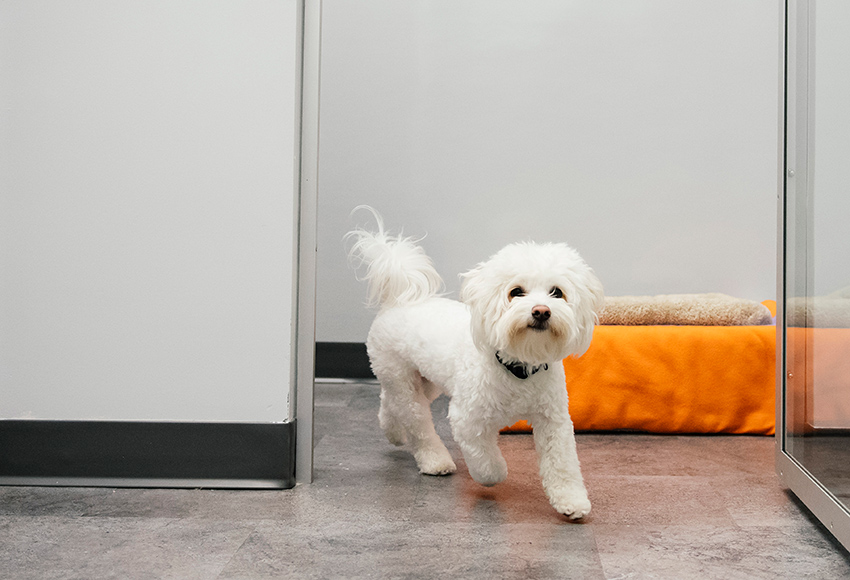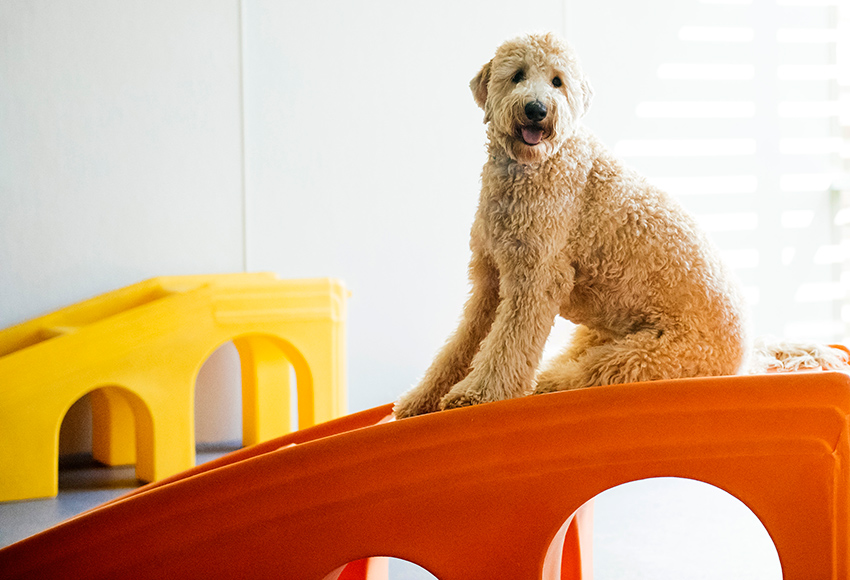The importance of daycare

Have you ever spent time and attention focusing on your dog’s behaviour when it encounters other dogs?
A leading dog trainer in Norway has identified over 30 body gestures that dogs make in social settings – whether with members of their own species or with humans. These have been widely interpreted as demonstrating an intent to “get along” with other “pack members.” Many people who study animal behavior are of the opinion that these communications are actually hardwired, automatic responses rather than deliberate ones, and take place with an end goal to affect the behavior of the other dog.
Communicative behaviors help dogs maintain peaceful pack relationships without resorting to violence. Many experts suggest that nonthreatening canine behaviors are more important in keeping the peace in packs than are dominance behaviors. Further, it is suggested that relations are primarily maintained by deference exhibited by subordinates toward higher-ranking members, as opposed to dominance displays by the alpha member. There are many types of behaviours which dogs within packs (or playgroups) display, and can generally be divided into several categories – appeasement (active submission), deference (passive submission), displacement, stress signs and dominance displays.
Understanding that there is an actual “behaviour code” among dogs, and that dogs communicate with each other in methods which are not easily comprehensible by humans is the first step towards understanding why open play daycare offers a degree of depth, pleasure, and fulfilment to a dog’s life that dog to human interaction simply cannot provide. This concept can be demonstrated to an extent by viewing human interaction within certain groups. For instance, consider a room full of musicians who are members of an orchestra. Each individual has an ability to communicate at a level which not every person possesses, yet this ability is manifest to a much more intense degree when musicians communicate with each other through their respective instruments. The actual sounds being created, and the instruments being used to create them can be individually appreciated by an outside observer, but it is really the collective results which underline this communication between members of the group. Each person in the room understands what is being conveyed – the tone, the feeling, and the mood – but these can only be partially described by words. The actual results transcend the ability of language to completely convey what is happening between each musician as they play their part in creating the overall result.
Similarly, dogs in an open play daycare room collectively create and maintain an experience for each of them which cannot be easily put into words. To say that dogs have “fun” in daycare or that they “interact” with other dogs only partially describes what is happening. In fact, what is taking place is that each dog is communicating at a basic, even primordial level with the other dogs in the room and using “language” which can only be properly utilized with others of the same species. Dogs derive pleasure from this experience in ways which can only be imagined by humans, but are nonetheless easy to observe. This enjoyment becomes readily apparent when dogs that have become acclimatized to a particular daycare facility and routine are viewed approaching their day of play. Their excitement levels – indicated by their tails wagging, straining at the leach, and enthusiastic barking are something many pet parents observe and comment upon regularly. Although dogs often take some time to become used to their surroundings and the routine of visiting the daycare facility, it usually does not take long before they will respond positively to terminology such as “play day” or “daycare” and exhibit a number of positive behaviours on their way to the facility which make it obvious that they remember their previous experience in open play and are looking forward to the next installment.
Ensuring dogs are presented with opportunities for socialization with other dogs is even more necessary when they are puppies. As with humans, dogs develop exponentially more rapidly in early life than in later life. Dog experts currently regard the first 2 years of a dog’s life as being equivalent to 10.5 human years EACH. Thereafter, each dog year equals about 4 human years. This analysis demonstrates the importance of making sure that positive, healthy stimulation is present early and often as the dog is developing his or her personality.
While it has been argued that daycare is not appropriate for all dogs, and this is certainly true to some degree – the vast majority of healthy, energetic, well behaved dogs are perfect candidates for a professionally managed and properly laid out dog daycare facility.
You may not know whether your dog is an appropriate candidate for daycare until you show up for your interview and the staff assesses your dog. Assuming your dog passes the assessment, there is a fair amount of information that becomes apparent during the first few visits. Different dogs will become acclimatized to their new routine at different rates and often times a number of visits are required in order to assess how your dog is “fitting in” with others. If you can locate a daycare facility in your area which offers multiple, dog rooms so much the better as room attendants can switch dogs from room to room in order to create an atmosphere in each room most conducive to healthy, interactive play. Once your dog settles in, best results are usually obtained through consistent routine visits of one or two days per week. A sporadic visitation schedule for dog day care is not recommended as it requires your dog to go through the acclimatization phase all over again each time he or she attends.
Alternatives to daycare, as noted earlier, do not provide the same degree of stimulation and enjoyment for dogs but in most cases they are preferable to simply doing nothing. Dog owners who leave their dogs at home all day in an empty house are neglecting to consider the disparity between average life spans for human time on earth compared to dogs. Imagine if you were in your house all day long without the ability to watch TV or use a computer because you didn’t have hands. You would most likely spend a large part of that day sleeping out of sheer boredom. Now consider this to be the case for an entire week. Finally, consider each day as being the equivalent of 5 days as human life spans are about 5 times as long as a dog’s. Looking at the daycare question in this light tends to suggest that caring and responsible pet parents should at least consider and/or investigate daycare options in their area to determine whether or not their dog will respond favourably to this service. You will never know unless you give it a try !!!
Next – What to look for in a professional dog daycare facility.











